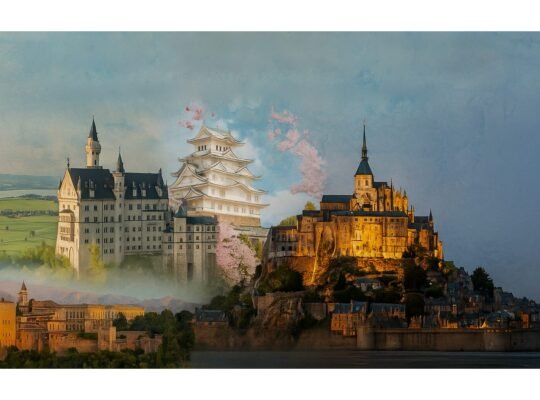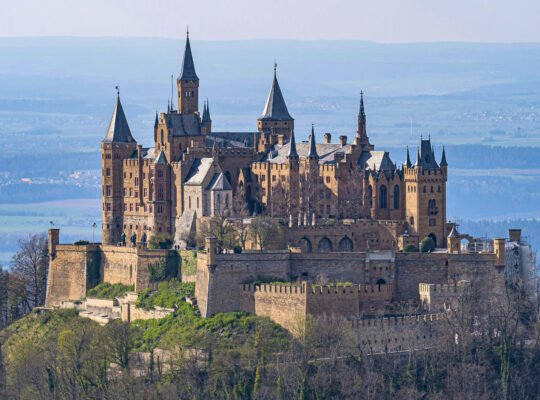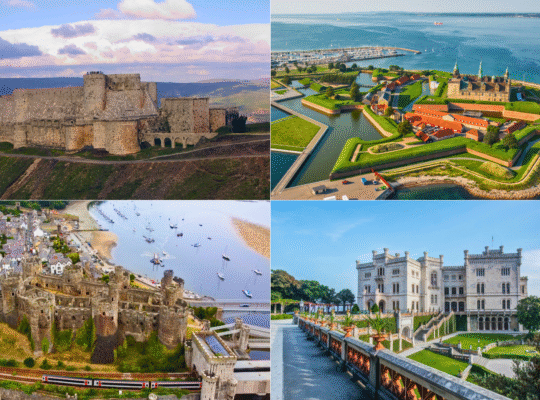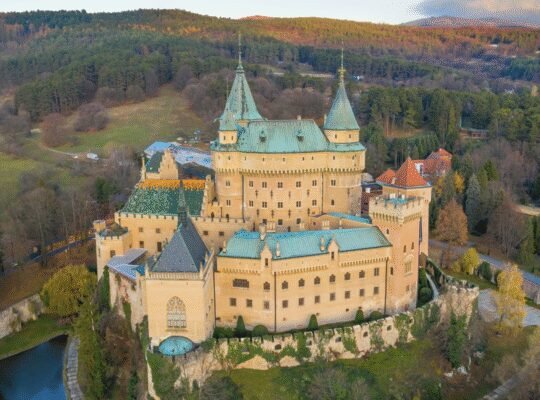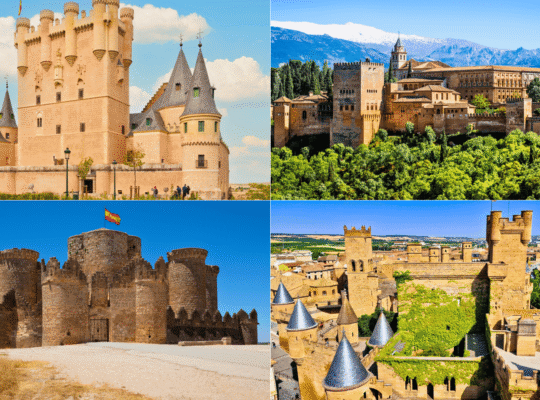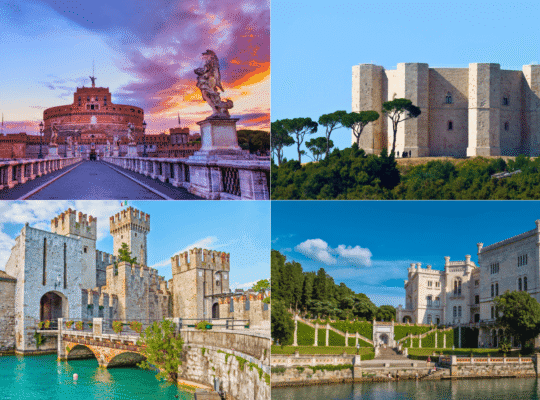Some castles whisper history. This one roars it.
Standing atop San Lázaro Hill under the searing Caribbean sun, I found myself staring up at the colossal walls of Castillo San Felipe de Barajas, the greatest military fortress ever built by the Spanish in the Americas. It’s not just a pile of stones—it’s a monument to resilience, cunning, and centuries of human drama.
I’d read about it, seen pictures, watched travel docs. But nothing compares to actually being here, climbing its maze-like ramps, tracing the darkened stone tunnels with a flashlight, and imagining the clash of empires echoing across the battlements.
This is not a fairytale castle. This is a war machine carved in coral stone. And I’m going to show you exactly why it should be at the top of your list when you visit Colombia. From the cannon-lined walls to the spine-chilling whispers in the tunnels, San Felipe is the kind of place that grabs you by the imagination and doesn’t let go.
Quick Facts
📍 Location: Cartagena, Colombia
🏗️ Construction Year: 1536 (with major expansions in 1657 and 1762)
🏰 Architectural Style: Colonial Spanish Military Architecture
🎯 Purpose: Defense against pirates, privateers, and rival empires
🎭 Famous For: Withstanding the 1741 British siege, secret tunnels, never being conquered
👑 Notable Figures: Blas de Lezo, Admiral Edward Vernon, Pedro Zapata de Mendoza
🏆 UNESCO Status: Yes, part of the Historic Walled City of Cartagena (1984 designation)
🌐 Website: https://fortificacionescartagena.com.co/en/
The History of Castillo San Felipe de Barajas
A Fortress Built on Gold and Fear
Cartagena was founded in 1533, and just three years later, the Spanish realized this sparkling port needed serious protection. Why? Because every pirate, admiral, and opportunist in the Caribbean had eyes on the treasure galleons docked here.
Enter Castillo San Felipe de Barajas, first built in 1536 and then bulked up over the next two centuries. Think of it as the Spanish Empire’s answer to anyone thinking, “Hey, let’s invade Cartagena.”
The Siege of 1741: Cartagena’s Finest Hour
The British came knocking in 1741 with 186 ships and 23,000 men. The Spanish had fewer than 4,000 defenders. Outnumbered? Yes. Outgunned? Definitely.
But the Spanish had Blas de Lezo—a one-eyed, one-armed, one-legged legend who knew how to use every inch of San Felipe’s design. He directed cannon fire from the upper batteries, launched surprise attacks through tunnels, and let disease and heat whittle down the enemy.
After weeks of siege, the British slunk back to sea, defeated. Vernon had medals made before the battle, confident of his victory. He left Cartagena humiliated.
This was Spain’s Alamo—except they won. And it wasn’t just a military victory—it was a moment that changed the fate of the Caribbean.
And the Labor Behind It All
As awe-inspiring as this fortress is, it’s important to acknowledge its darker side. Much of the heavy lifting was done by enslaved African laborers, who worked under cruel conditions to move rock, dig tunnels, and build walls that still stand today. Their story is part of this place too.
San Felipe’s story isn’t just a tale of military strategy—it’s a reminder of colonial injustice, of people whose sweat and pain helped build what we now admire. Their legacy deserves to be remembered and honored.
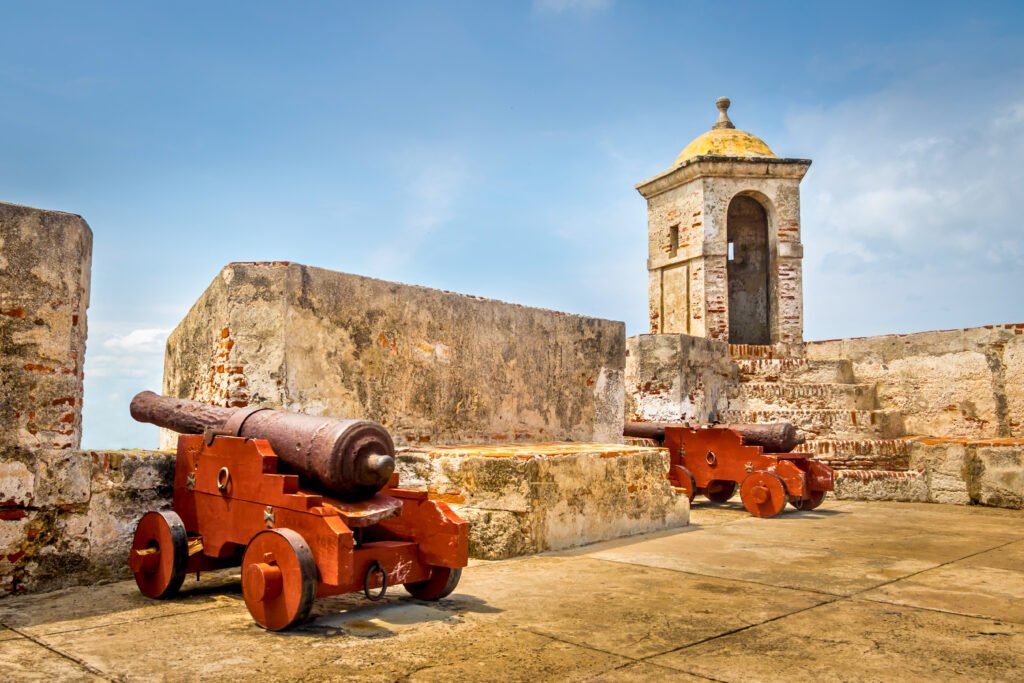
Architecture & Design
Brutal Beauty
Let’s be clear—this isn’t some dainty hilltop castle with spiral towers and stained glass. Castillo San Felipe was made for intimidation.
Its design is all angles, layers, and lethal functionality. The zigzagging ramps disorient attackers. The dry moats slow down assaults. And the bastions—those stone claws sticking out from the walls—give defenders overlapping fields of fire.
Even the positioning of the fortress is genius. San Lázaro Hill gives it a panoramic view of land and sea. No one could sneak up on this beast. And every layer was built to protect the next, like a deadly Russian nesting doll.
Tunnel Tactics
The tunnels are genius. They twist, echo, and amplify even the quietest sound. Soldiers could hear invaders approaching, shift positions silently, and even detonate explosives if needed. Some tunnels were booby-trapped. Others led to secret outposts.
Bring a flashlight. Some are lit, but walking through a narrow, humid, centuries-old tunnel with echoes bouncing off the walls? That’s when the fortress truly comes alive.
I walked one of those tunnels alone. The walls felt close. My footsteps echoed behind me. And I couldn’t help but wonder—who else had walked this path in fear, or in courage?
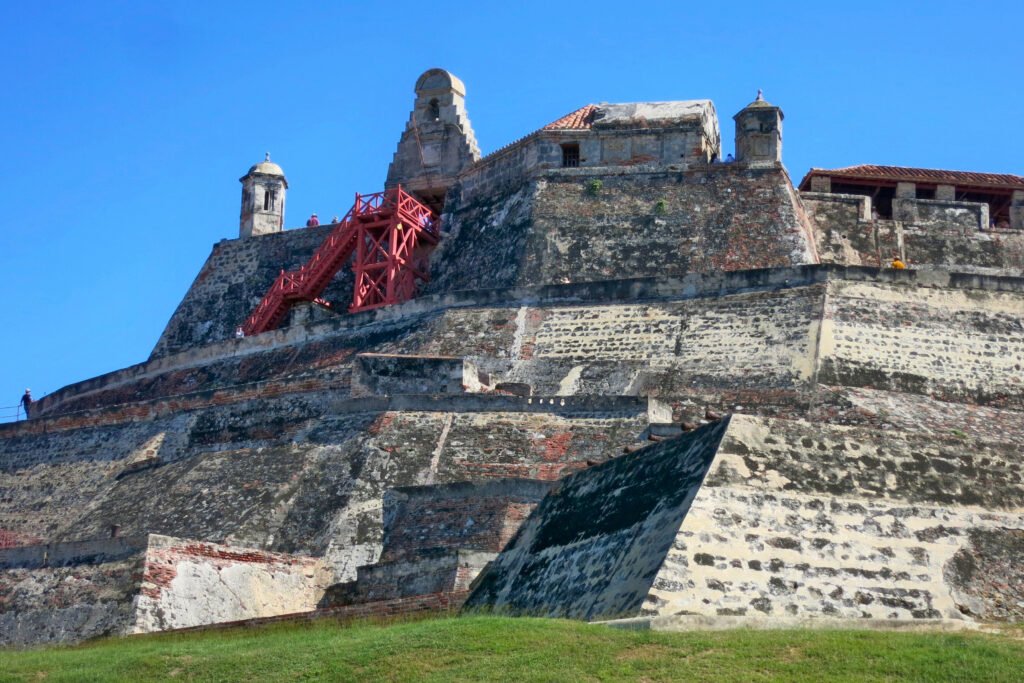
Myths & Legends
Blas de Lezo Never Left
Some say the admiral’s ghost still roams the walls. A few early-morning guards swear they’ve heard whispered Spanish commands echoing from the darkness. It’s probably the acoustics… probably.
He died shortly after the battle, reportedly from wounds sustained during the siege. But the stories say his soul never left the fort he defended. Whether or not you believe it, you’ll feel something when you walk his battlements.
Hidden Gold
Like any good fortress, San Felipe has legends of treasure buried during the British siege. Gold, religious relics, even secret documents. Nothing’s been found (yet), but it keeps the treasure hunters coming.
And who knows? That sealed-off tunnel entrance might just be hiding more than bricks and cobwebs.
Whispering Walls
I didn’t believe the stories until I stood alone in a tunnel and heard a soft echo behind me. Could’ve been wind. Could’ve been ghosts. Either way, I walked a little faster after that.
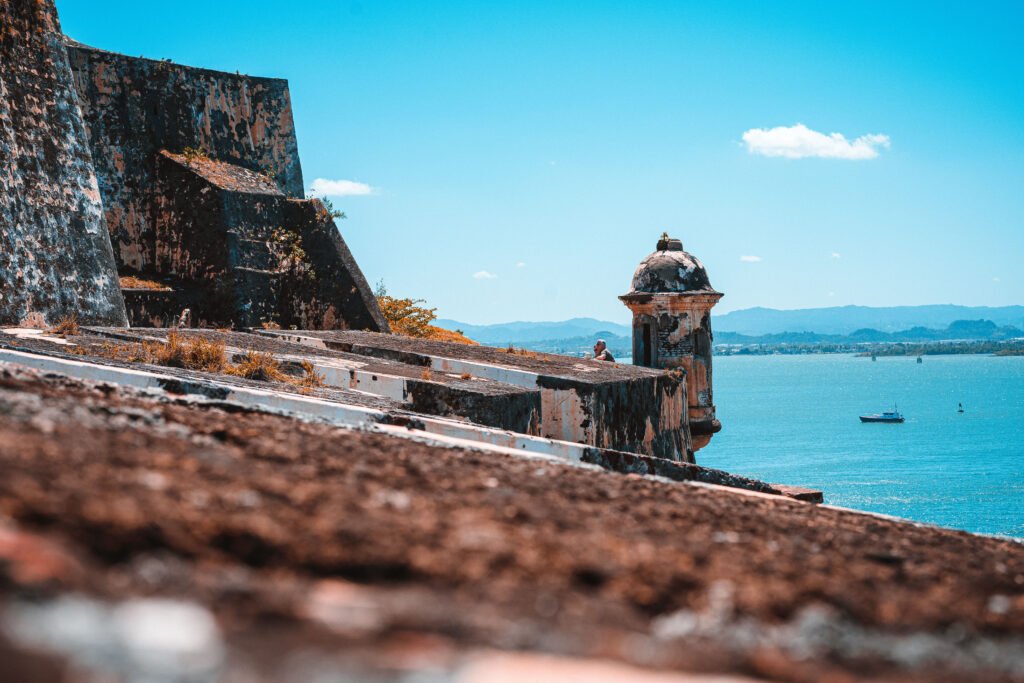
Best Time to Visit
☀️ Dry Season (Dec–Mar): Blue skies, blazing sun, and big crowds. Bring water, a hat, and your patience.
🌧️ Shoulder Seasons (Apr–Jun, Sept–Nov): Less crowded, still beautiful. Occasional rain. Great time for photographers.
🌇 Golden Hours: Early morning or sunset for the best photos—and fewer people.
🎉 Festivals: Check Cartagena’s events calendar. Cultural performances sometimes happen right inside the fortress.
Also worth noting: Cartagena gets hot—really hot. Try to time your visit early in the morning to avoid the midday blaze, especially if you plan on climbing to the top.
How to Get There
📍 Address: Carrera 17, Cartagena, Bolívar, Colombia
🚶♂️ From Cartagena’s Walled City: About a 20-minute walk or 5-minute taxi ride.
🚖 Taxis and Ubers are cheap and plentiful. Just confirm the fare beforehand.
🚌 Local buses or colectivos run nearby—ask a local for help.
🚗 Parking is available at the base. Get there early during weekends.
Many guided tours of Cartagena include San Felipe, but I’d recommend setting aside dedicated time. You’ll want at least 2–3 hours to explore fully—and more if you’re a history nerd like me.

Travel Tips
🎟️ Tickets: Around 25,000 COP (~$6 USD). Discounts for locals and kids. Buy online or at the gate.
👟 Shoes: Wear good ones. The terrain is rugged and hot.
🔦 Flashlight: For exploring tunnels, even during the day.
💧 Water: Essential. You’ll sweat buckets.
🕗 Hours: Open daily, 8 AM – 6 PM. Last entry around 5:30 PM.
📸 Photography: No restrictions. Bring a wide-angle lens if you have one.
🦽 Accessibility: Some ramps exist, but much of the site is uneven and challenging.
🧭 Bonus Tip: Start at the base and work your way up slowly. Each level tells a different story, and the higher you go, the more you’ll appreciate the view—and the strategy behind its design.
Nearby Attractions & Experiences
🏙️ The Walled City: Colorful colonial streets, boutiques, street performers, and more charm than your camera can handle.
🎨 Getsemaní: Murals, live music, and bohemian vibes. Perfect place for a cold drink and people-watching.
⛪ La Popa Monastery: The best views of Cartagena—and a quiet contrast to the fortress.
🏝️ Rosario Islands: Need a beach break? Snorkel, swim, and sunbathe just a short boat ride away.
🍽️ Food to Try Nearby:
• Arepa de huevo – crunchy, stuffed, glorious.
• Cazuela de mariscos – seafood stew sent by the gods.
• Limonada de coco – heaven in a cup. Cold, sweet, and perfect after all those stairs.
Want something special? Try La Cevichería in the Walled City—made famous by Anthony Bourdain, and worth the wait.
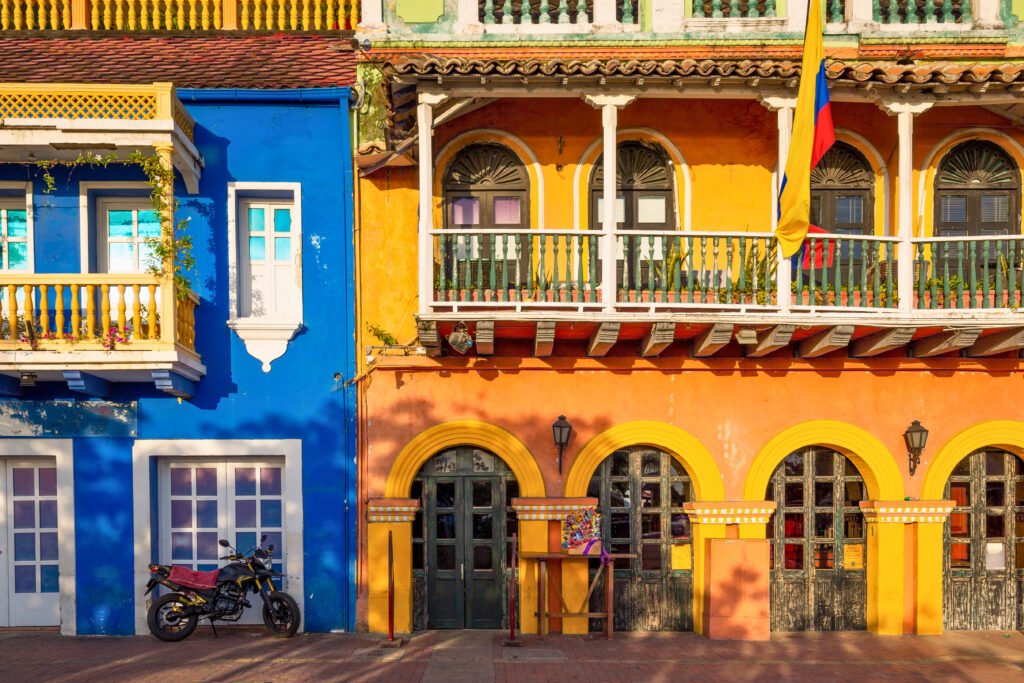
Final Thoughts
If you like your history raw, unfiltered, and larger than life, Castillo San Felipe de Barajas delivers. This place isn’t just about bricks and battles. It’s about the power of human will. It’s about strategy, sacrifice, and survival. And walking its walls, you feel all of that.
So go. Get lost in its tunnels. Stand where Blas de Lezo stood. Watch the sun set over the Caribbean from the upper battery and realize—this fortress still holds its ground.
💬 Have you been to Castillo San Felipe? Share your experience below!
👉 And if you love mighty hilltop fortresses, don’t miss our guides to Mehrangarh Fort in India and Fasil Ghebbi in Ethiopia.
🏰✨ Follow us on social media, Facebook, Instagram, Pinterest, and X, for more real history, incredible castles, and travel ideas that go beyond the ordinary.






















